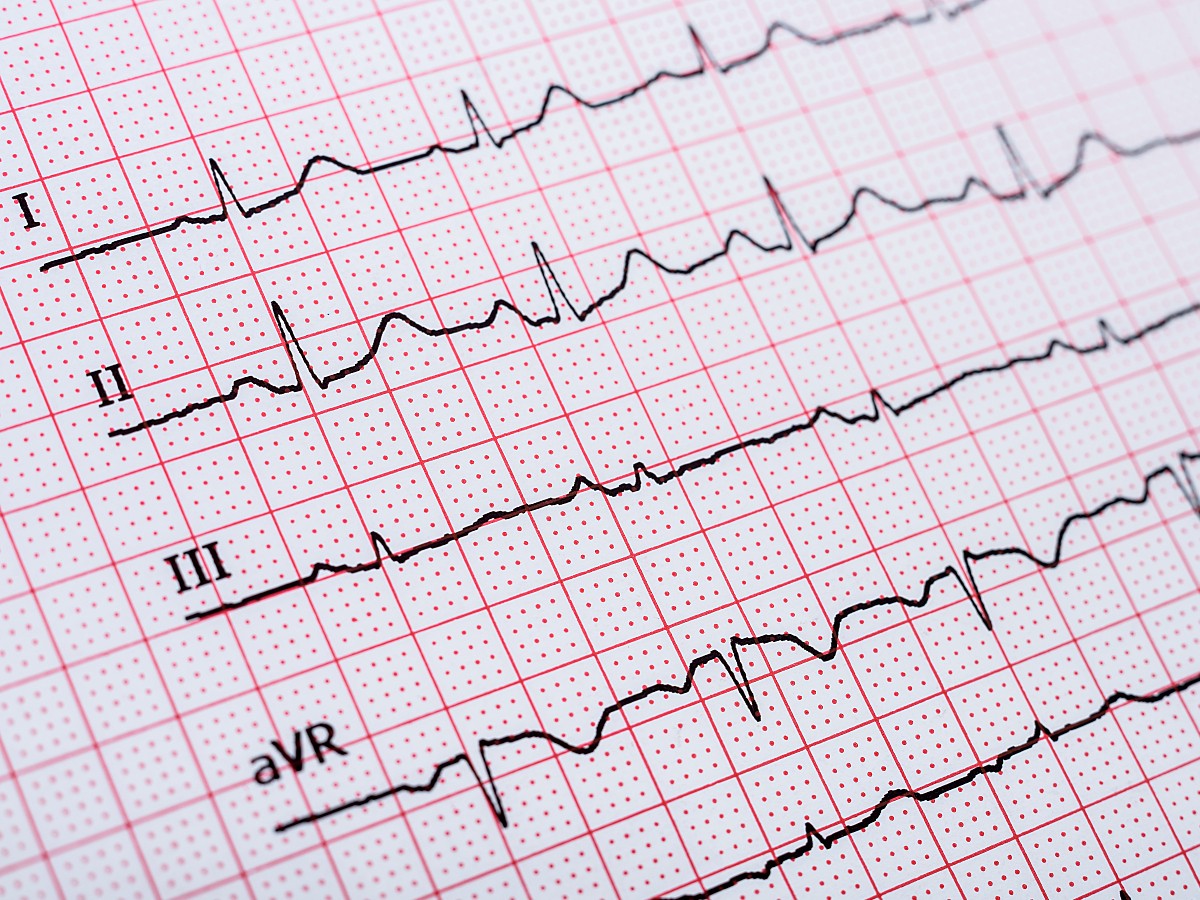By Sarah Handzel, BSN, RN
QT prolongation is associated with increased risk of potentially lethal arrhythmias, such as torsade de pointes (TdP). However, continuous or long-term QT measurement for a patient with a standard 12-lead ECG is impractical in many cases. This is especially evident after the COVID-19 pandemic, as clinicians are considering whether certain services should move from healthcare facilities into outpatient settings or even patients' homes.
QT interval abnormalities can occur for a variety of reasons, including the use of certain medications, conditions like hypokalemia, and inherited disorders like congenital long QT syndrome.1 Early detection and identification of QT interval changes can be key to saving a patient's life. New technologies, like fitness-tracking smartwatches, may offer a method of remote monitoring, but these devices have not been shown to gather QT interval data accurately.2
Instead, newer ECG monitoring devices, such as the KardiaMobile 6L, can help detect other conduction abnormalities or arrhythmias using up to six frontal plane leads in the comfort of the patient's home. Cardiologists should weigh the risks and benefits of these options and help patients adapt to using at-home cardiac tools.
Wearables: Limitations and Possibilities
Traditionally, physicians relied on ECG patches or chest straps to collect cardiac data. But as technology has progressed, other multifunction wearables have become available and are being marketed to health-conscious consumers. Today's in-home heart monitoring devices include smartwatches, smart rings, and even clothing embedded with sensors.3
Most commercially available wearables currently measure heart rate and rhythm using single-lead ECGs. A few of these devices have shown high diagnostic accuracy for arrhythmias, like Afib, but their QT measurement capabilities are less well documented.
As COVID-19 cases surged, researchers discovered a link between QT interval prolongation and the use of certain antivirals, antibiotics, and antimalarial drugs.4 Providers realized the importance of monitoring COVID-19 patients who were not admitted for this complication. While wearables can help bridge the gap, a single-lead wearable device is not a substitute for the more comprehensive reading provided by a 6-lead or 12-lead ECG.
New Options Provide Physicians with a Clearer Picture
Now at-home multiple-lead ECGs have entered the market, and they are already providing physicians with a wealth of information outside the hospital setting. KardiaMobile 6L is the only FDA-cleared 6-lead personal ECG device that collects data from two leads instead of one, a viable option for patients who should avoid the COVID-19 exposure risks of a hospital environment.5
A 2021 study in BMJ Open found that AliveCor's single-lead ECG device, called the KardiaMobile, accurately measured QTc intervals compared with simultaneously collected 12-lead ECGs.1 Another article in Cardiology Journal confirmed that PQ, RR, and QT were significantly shorter, further confirming the results, suggesting that such devices are reliable for measuring QT intervals in patients on medications that carry a risk for QT interval prolongation.6 Studies examining the KardiaMobile six-lead ECG device, KardiaMobile 6L, validated its performance against standard 12-lead ECG for many measurements, including QT. While rhythm analysis and interpretation was excellent, the 6L device was not as effective in its assessment of ischemia; instead, providers should continue to rely on 12-lead ECG when ischemia is suspected.7
To learn more about the power of the ECG in today's clinical landscape, browse our Diagnostic ECG Clinical Insights Center.
Improving Patient Compliance with Remote Monitoring
Even though remote monitoring technologies allow patients to stay in their own homes, many may find it difficult to adhere to QT measurement orders. Doctors can explain the importance of regular data collection using remote ECG technology, but patients may still not grasp the significance of following a monitoring plan.
To help patients better adhere to remote monitoring, physicians should try:
- Building a rapport and ensuring continuity of care
- Involving patients in monitoring and treatment decisions
- Understanding the patient's healthcare goals and perceptions of their disease process
- Simplifying the monitoring regimen
These techniques can help improve patient engagement, satisfaction, and compliance with continuous or long-term remote QT measurement. Patients should be advised to use the most advanced remote and appropriate ECG technologies possible to capture the most accurate electrophysiological data.
References:
- Beers, Lisa, et al. "Manual QT Interval Measurement with a Smartphone-Operated Single-Lead ECG versus 12-Lead ECG: A within-Patient Diagnostic Validation Study in Primary Care." BMJ Open, British Medical Journal Publishing Group. Nov. 1, 2021. https://bmjopen.bmj.com/content/11/11/e055072. Accessed April 27, 2022.
- Strik, Marc, et al. "Validating QT-Interval Measurement Using the Apple Watch ECG to Enable Remote Monitoring during the COVID-19 Pandemic." Circulation, June 1, 2020. https://www.ahajournals.org/doi/10.1161/CIRCULATIONAHA.120.048253. Accessed April 27, 2022.
- Bayoumy, Karim, et al. "Smart Wearable Devices in Cardiovascular Care: Where We Are and How to Move Forward." Nature Reviews Cardiology, Nature Publishing Group, 4 Mar. 2021. https://www.nature.com/articles/s41569-021-00522-7#Sec7. Accessed April 27, 2022.
- Santoro, Francesco, et al. "QTc Interval Prolongation and Life-Threatening Arrhythmias during Hospitalization in Patients with Coronavirus Disease 2019 (COVID-19): Results from a Multicenter Prospective Registry." OUP Academic, Oxford University Press, Oct. 24, 2020. https://academic.oup.com/cid/article/73/11/e4031/5938528. Accessed April 27, 2022.
- "New FDA Guidance Allows Use of KardiaMobile 6L to Measure QTc in COVID-19 Patients." AliveCor, https://www.alivecor.com/press/press_release/new-fda-guidance-allows-use-of-kardiamobile-6l-to-measure-qtc-in-covid-19-patients/. Accessed April 27, 2022.
- Koltowski, Lukasz, et al. "Kardia Mobile Applicability in Clinical Practice: A Comparison of Kardia Mobile and Standard 12-Lead Electrocardiogram Records in 100 Consecutive Patients of a Tertiary Cardiovascular Care Center." Cardiology Journal, Jan. 2, 2019. https://journals.viamedica.pl/cardiology_journal/article/view/58839. Accessed April 27, 2022.
- Azram, Mohammad, et al. "Clinical Validation and Evaluation of a Novel Six-Lead Handheld Electrocardiogram Recorder Compared to the 12-Lead Electrocardiogram in Unselected Cardiology Patients (EVALECG Cardio)." OUP Academic, Oxford University Press, 28 Sept. 2021. https://academic.oup.com/ehjdh/article/2/4/643/6377335. Accessed July 29, 2022.
Sarah Handzel, BSN, RN has been writing professionally since 2016 after spending over nine years in clinical practice in various specialties.
The opinions, beliefs, and viewpoints expressed in this article are solely those of the author and do not necessarily reflect the opinions, beliefs, and viewpoints of GE Healthcare. The author is a paid consultant for GE Healthcare and was compensated for creation of this article.

